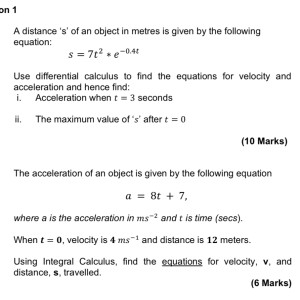Easy money (basic calc)
Answer this fully and explain every step to both questions
Answer
Answers can only be viewed under the following conditions:
- The questioner was satisfied with and accepted the answer, or
- The answer was evaluated as being 100% correct by the judge.
171
The answer is accepted.
Join Matchmaticians Affiliate Marketing
Program to earn up to a 50% commission on every question that your affiliated users ask or answer.
- answered
- 1265 views
- $4.00
Related Questions
- 35 min question
- Find $\lim _{x \rightarrow 0} x^{x}$
- 2 questions in 1
- Prove that $\int_0^1 \left| \frac{f''(x)}{f(x)} \right| dx \geq 4$, under the given conditions on $f(x)$
- Derivatives
- Hs level math (problem solving) *der
- Use Rouche’s Theorem to show that all roots of $z ^6 + (1 + i)z + 1 = 0$ lines inside the annulus $ \frac{1}{2} \leq |z| \leq \frac{5}{4}$
- Calculus - Differentiation


